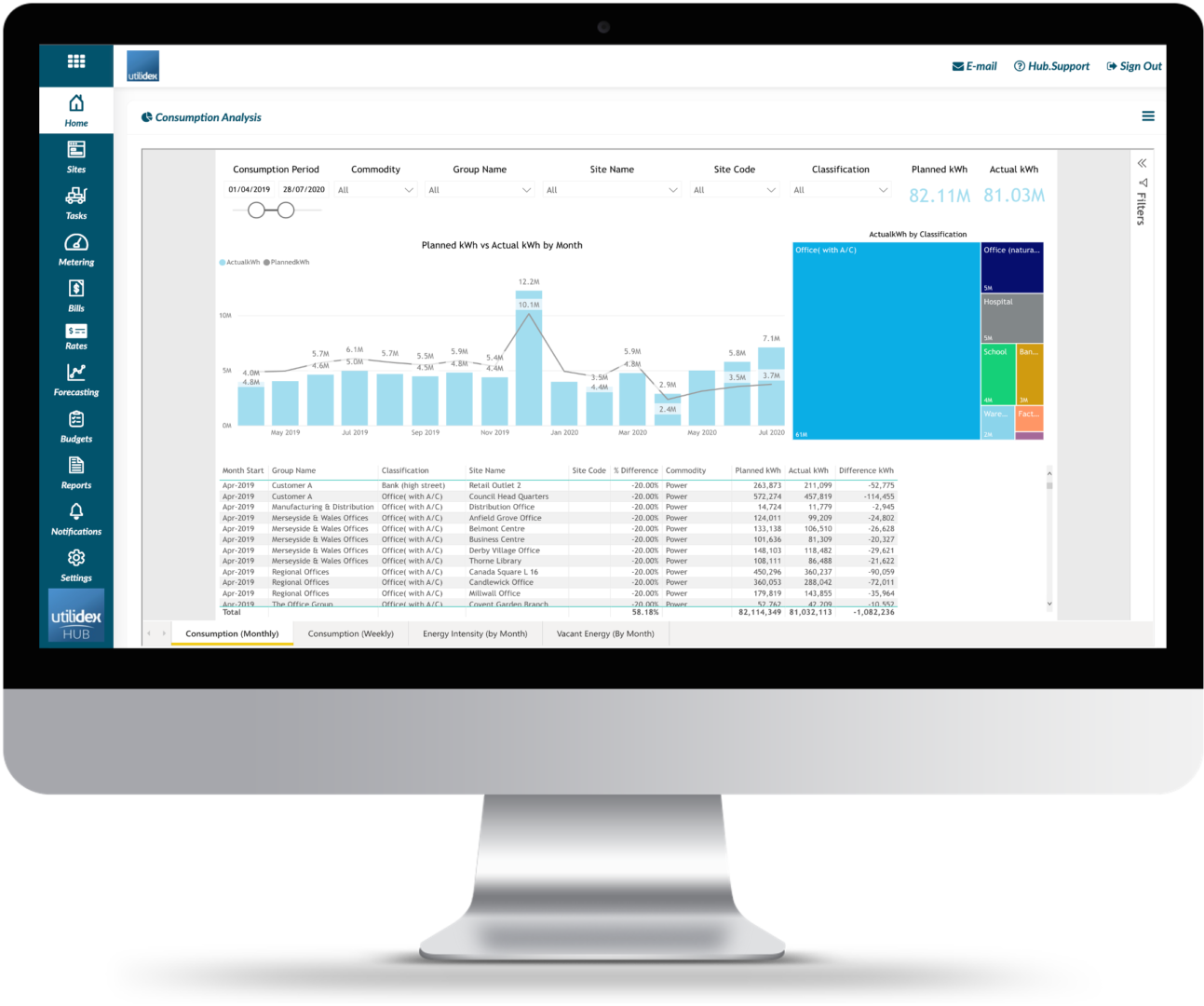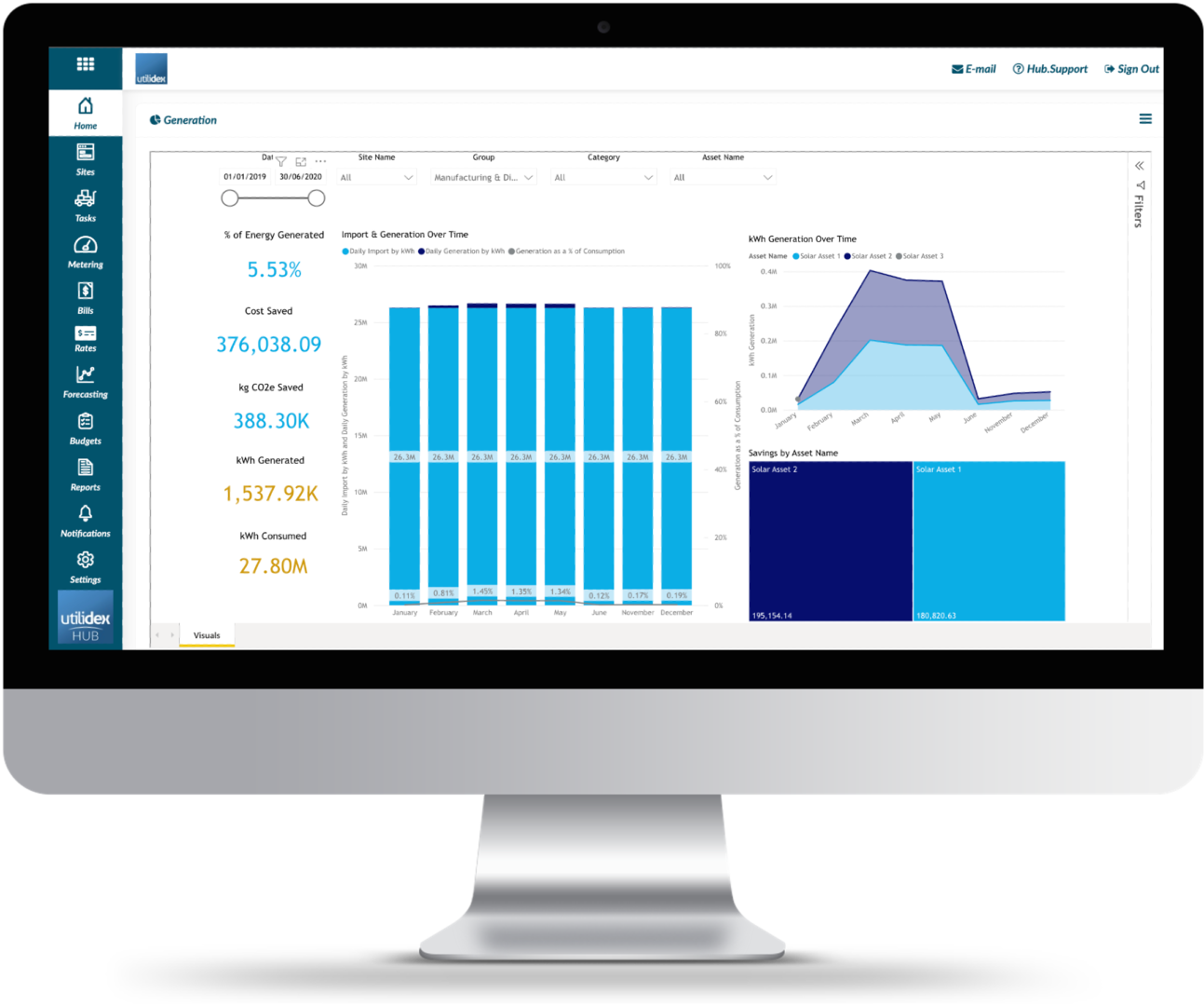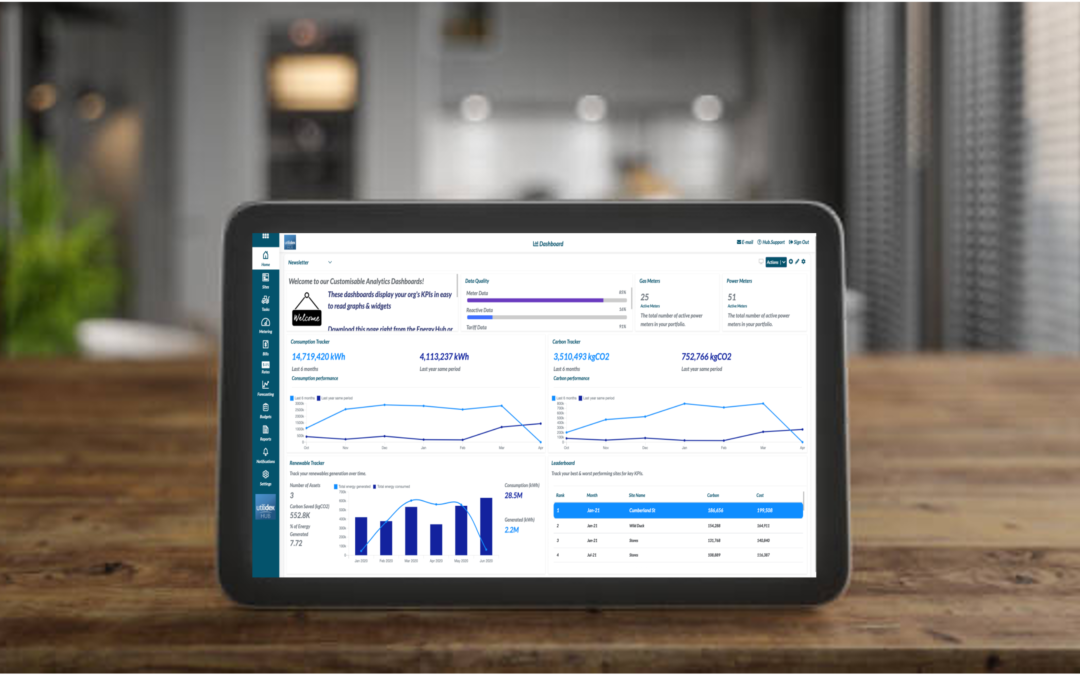With energy prices at approximate £240 MWh and gas prices hovering around £2.80 a therm at the time of writing, there has never been a better time for both small and mid-sized corporate customers to explore how they might reduce consumption. Unlike other instances in the past, this price increase seems to be the new normal. Energy is now contributing to 12% of GDP as opposed to 4% just 2 years ago, a fundamental shift where there is a widening gap in supply and demand. We are now at a critical point to assess what can be done about this?
Firstly, for consumers it is essential you receive your energy consumption data, after all, this is your data and suppliers should be able to provide this via their web portal to be able to view gas and power consumption for your buildings. If you have a consultant or contract directly with the metering company the same rule should apply, typically the bill line item is labelled “AMR data” charge. If you have a software vendor like Utilidex, this service can be customised to provide an immediate view of your consumption, even breaking down to a half-hourly view with alerting frameworks illustrating any abnormal consumption behaviour such as erratic consumption or out of hours usage.


Next, it’s important to understand the data in granular form. How is gas and electricity consumed through-out the day? Just by looking at each of your sites consumption data and comparing it to last week is a simple but useful benchmarking approach. In addition reviewing your consumption trends over different periods and seasons is helpful as your sites may well be impacted by factors such as the weather.
For example, if you have a cooling or heating temperature requirement above or below the norm for a specific time of year, this might adversely impact and increase your consumption. It is also important to realise that identifying trends in your consumption behaviour may not always be presented in a way that makes sense. Using a software platform like Utilidex helps bring your data to life by displaying consumption over time, trends, outliers and savings opportunities through variousdashboards, interactive visuals and customisable reports.
Having access to your data and viewing these trends should also expose some quick wins. If the typical norm for vacant energy or out of hours consumption is at 30%, you can question why a specific site might have a higher ratio and explore the details of the site further or with the facility manager. Likewise, if gas consumption is higher by square foot than another over the year, it might be worth exploring changing the building temperature set points to 19 or 20 degrees Celsius.
With your data at your fingertips, you can also explore the investment case to become your own producer of power or utilise what you have already more effectively. This will reduce the impact of the GDP rise, at least for your business. Solar or a mix of solar and batteries is an enticing proposition at current prices and there are both energy suppliers and other third-party organisations who can finance this if you do not have budget in the balance sheet. Not only can you reduce energy consumption during the day, but you can also eliminate third party import costs amounting to around 10p kWh for every kWh produced or 34p kWh with the commodity cost avoided (based on average price April 1st 2022 – March 31 2023).
If you have a CHP facility, it may well be oversized and if you have the ability to export excess, this can allow you to reduce your weighted average cost of energy and create an income stream at the same time. It might also be possible to reduce your heat requirement. You could even consider providing services to National Grid directly who will pay you for availability as well as services such as fast frequency response. Finally, there are hybrid options which are worth exploring that includes a combination of solar, batteries and CHP working collaboratively. Over the last year, Utilidex has been working with UCL to support these forward-looking calculations to optimise energy consumption and load, having a software to automate the work rather than attempting to do this in house.
It is evident that understanding your energy data is the first step when planning your net zero journey and reducing your overall energy consumption and carbon footprint. This also reduces the quantity of carbon you might need to offset through other means in the future. Turning export generation into a revenue stream is a solutionto high prices with an enticing investment case. If you are interested to learn more about Utilidex and UCL’s recent research project on CHP efficiency, please click here.
To find out more about how Utilidex can support your reduction in carbon and consumption journey, please contact [email protected].



